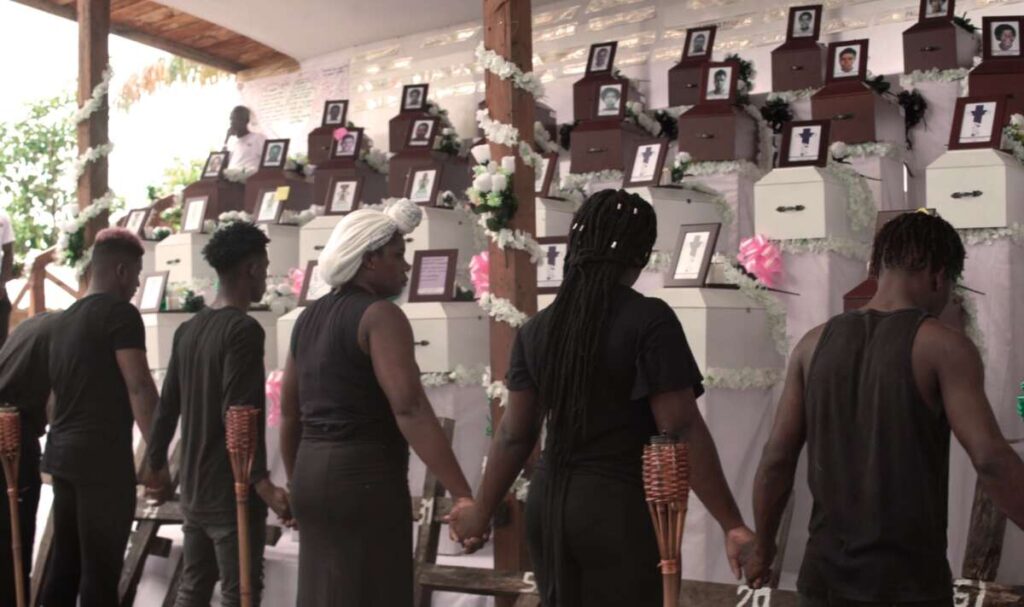Theatre in Bojayá: memory in the present,
Standing before the audience, the actors of the Colectivo de teatro de Bellavista say in unison: “We lost our people!”.

It is 17 November 2019 and the ‘lost people’ are just to the left of the stage, in the coffins where the remains of 72 identified victims from the 119 people who lost their lives on 2 May 2002 in the church of Bellavista, Bojayá rest. A vigil will be held over them that night and the next day they will be taken to the Mausoleum of Bellavista Nuevo, where they will be able to rest in peace after their families spent 17 years pushing for the dignity of their names to be returned to them.
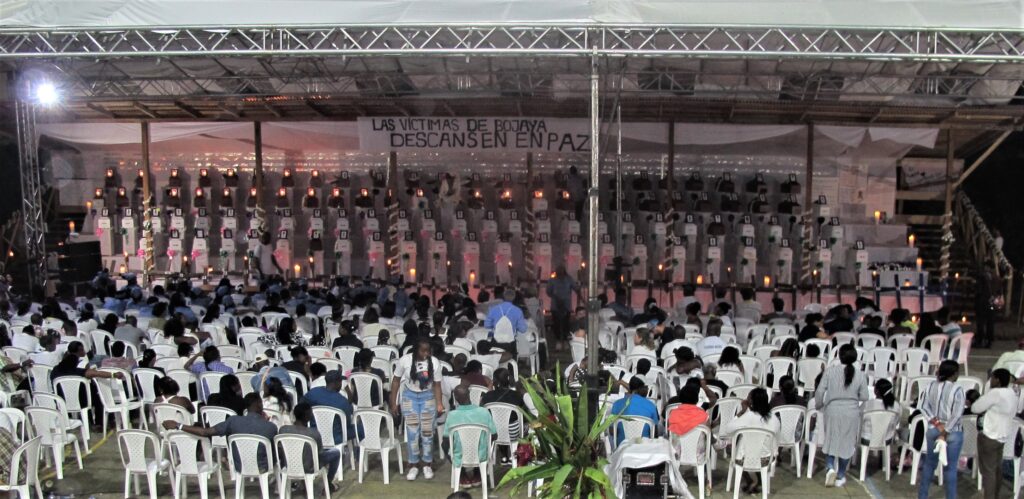
These are the bodies of the mothers and fathers, brothers and sisters, grandparents, uncles and aunts, cousins and neighbours of the actors and actresses who created the theatrical piece Honrar a los sagrados espíritus [Honouring the Sacred Spirits] to pay homage to them and build memory of the past and present.
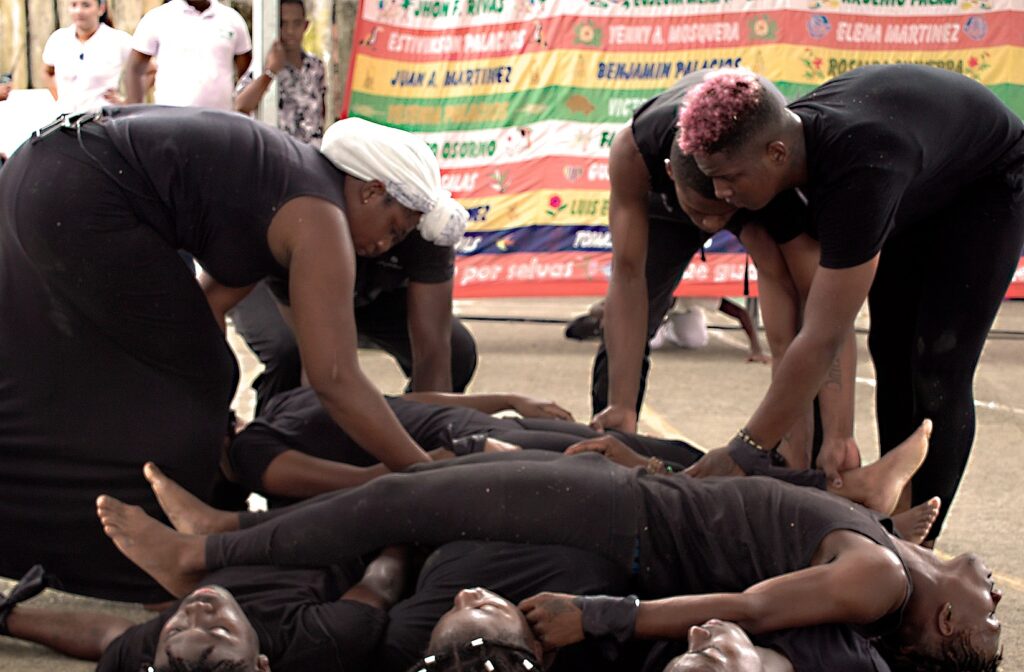
In the audience and on stage are the survivors, neighbours and family members of the sacred spirits. They have been gathered together since 11 November 2019 in Bellavista Nuevo to receive the identified bodies of their loved ones and to honour them and perform the funeral rites that were delayed for 17 years.
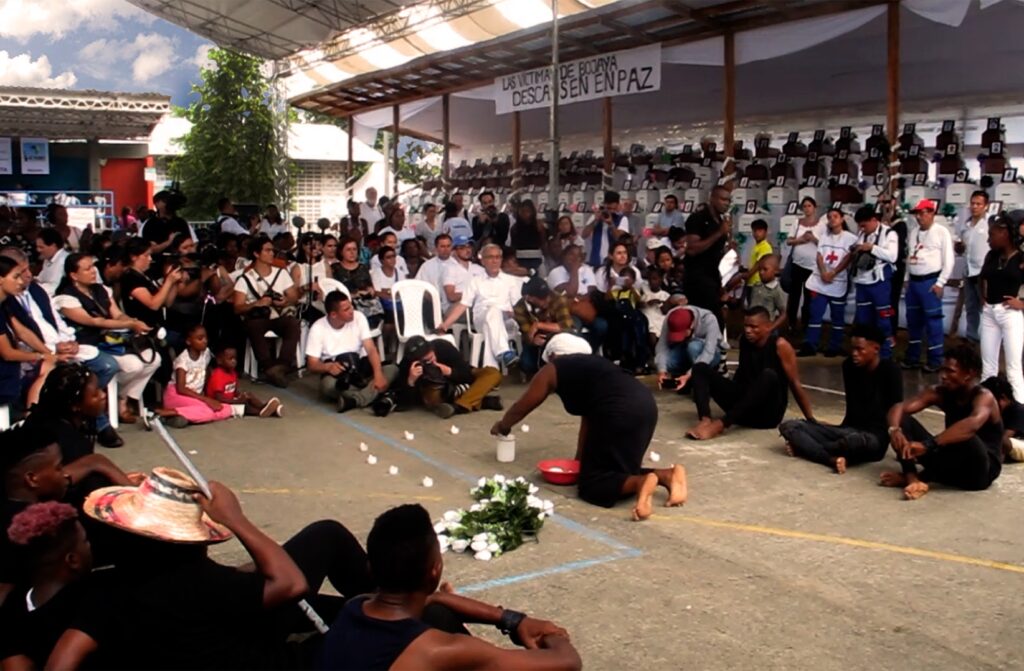
This is a historical moment that the community has called ‘La Entrega Final’, or final handover, concluding a process of reparation that enables them to bury their loved ones and say goodbye to them, transforming the experience of their losses after a long process of movements and disinterment that re-signified the meanings of their traditions and transformed their ritual practices.

Fragment of an interview with José Luis Murillo. Bellavista Nuevo (Bojayá), 2020. Sound recording: Prácticas Artísticas y Memoria en el Pacífico research project (UdeA – RHUL).
In a process of collective creation, the actors make memory with their bodies and narrate the process of collective mourning that the community experienced from the massacre until this final handover. In this performance they reconstruct the paths of the victims’ bodies, from the time they were carefully placed in the mass grave until the vigil and the farewell to them with prayers and singing of alabaos and gualíes.
In the final scene of the work, with white and brown cardboard boxes that resemble the coffins of the adults and children, the actors make a mandala to represent of the present moment with flowers and candles that remain lit on the stage and are integrated into the ritual process that continues to honour the sacred spirits after the end of the theatrical work.
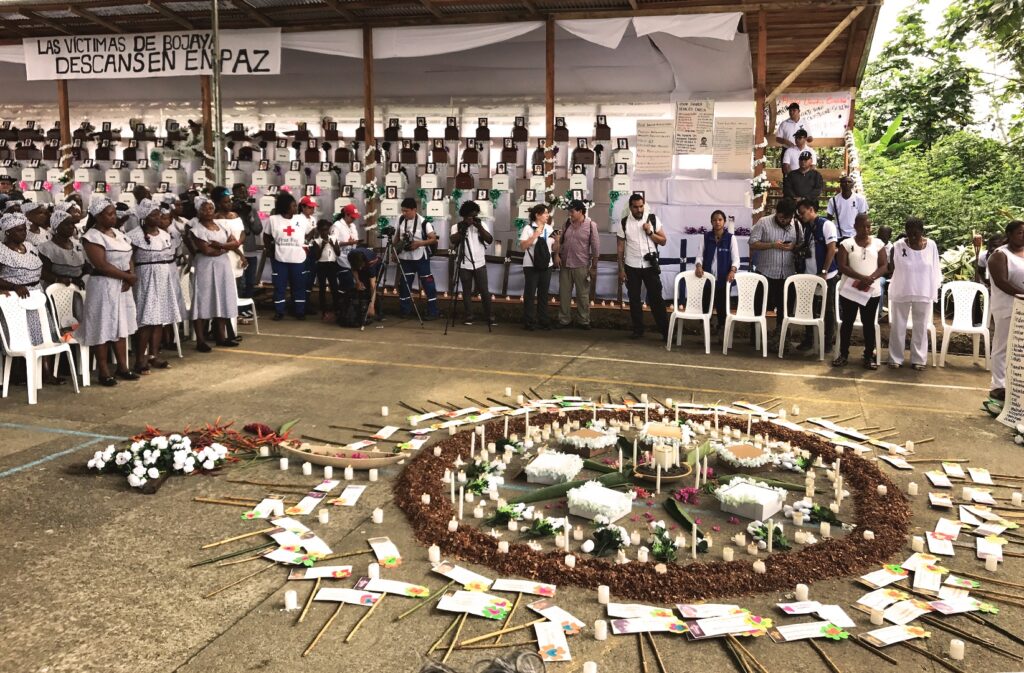
In Honrar a los sagrados espíritus, the performers represent themselves, the victims, armed actors, state institutions and politicians. They also represent their communities, which are currently under threat, and they again denounce the presence of armed actors in their territory, expressing their desire for peace and reconciliation through art and their everyday activities.
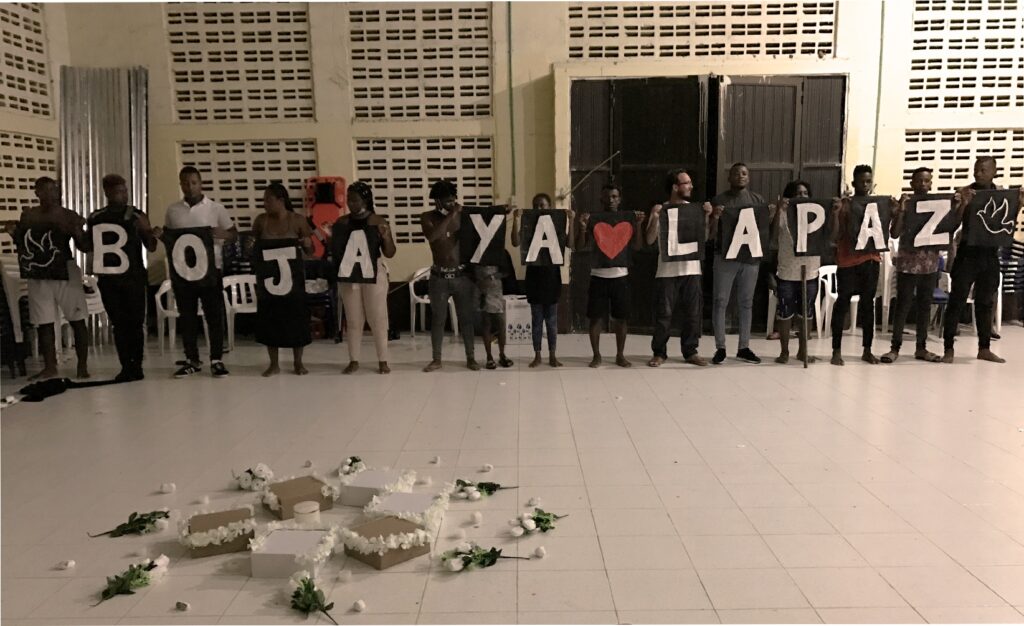
“History repeats itself, the actors rise up” says Elvia Mosquera in a loud voice on the stage, repeating a scene from La historia se repite (History Repeats Itself, 2005), a work with which the Colectivo de Teatro de Bellavista commemorated the third anniversary of the massacre in an interethnic minga that denounced new threats to life and the territory.

Fragment of an interview with José Luis Murillo. Bellavista Nuevo (Bojayá), 2020. Sound recording: Prácticas Artísticas y Memoria en el Pacífico research project (UdeA – RHUL).
The actors and actresses remember the process and development of the colectivo de teatro de Bojayá when they adapt scenes, characters and objects from other works like Los muertos hablan (The Dead Speak, 2003), La historia se repite (2005) and Entre las ruinas (Among the Ruins, 2012), which were created to accompany the community and honour their loved ones in the commemorations marking the anniversaries of the massacre.
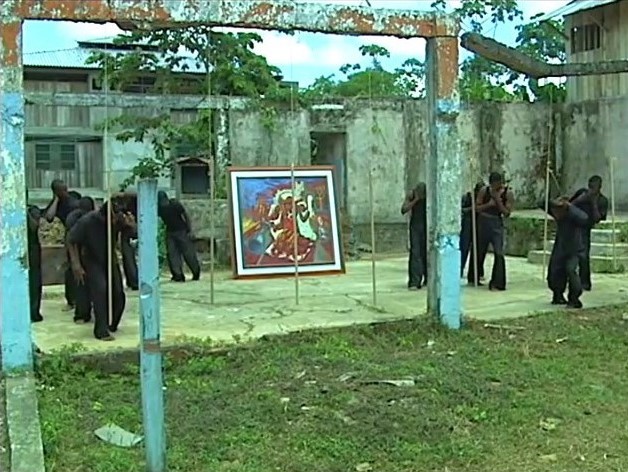
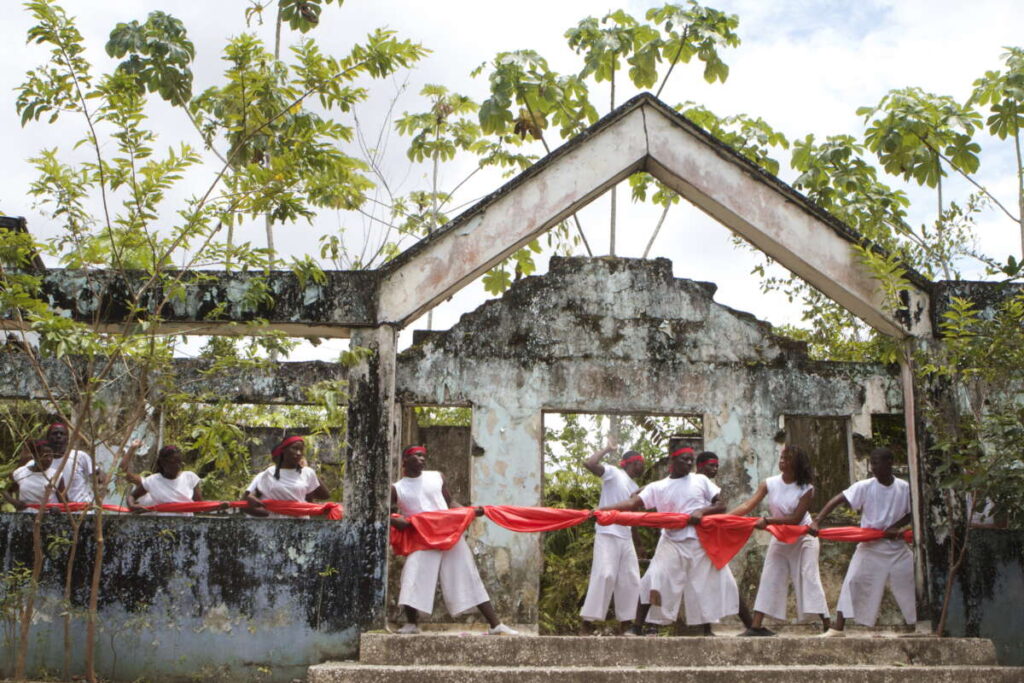
Since 2003, when the survivors created the performance of Los muertos hablan to commemorate the first anniversary of the massacre, theatre, through the actors, has enabled communities in Bojayá, “to look the horror in the face, without closing their eyes” and “to say the things we want to say, but are too scared to say” Jose Luis Murillo

Fragment of an interview with José Luis Murillo. Bellavista Nuevo (Bojayá), 2020. Sound recording: Prácticas Artísticas y Memoria en el Pacífico research project (UdeA – RHUL).
These theatrical works are part of a process of theatre training in the Atrato region encouraged by the Diocese of Quibdó between 2002 and 2008. This process strengthened theatre groups in Quibdó, Bellavista, Vigía del Fuerte, Murindó and other municipalities in el Chocó, under the direction of Inge Keutgens and with the support of the AGEH-Civil Peace Service international cooperation programme. The theatre groups comprised of young African-descendant, Indigenous and Mestizo people from these municipalities, produced more than 10 works of collective creation in which they represent their feelings, experiences, dreams, preoccupations and fears.
Here you can find a time line of theater in the Atrato
The memory of these theatre works is located in the bodies of the actors – who remember them, retake them, adapt them and re-signify them – as well as in the scripts, which have been compiled in two books called Ese Atrato que juega al teatro (That Atrato that Plays Theatre), which the actors keep as precious memory objects.
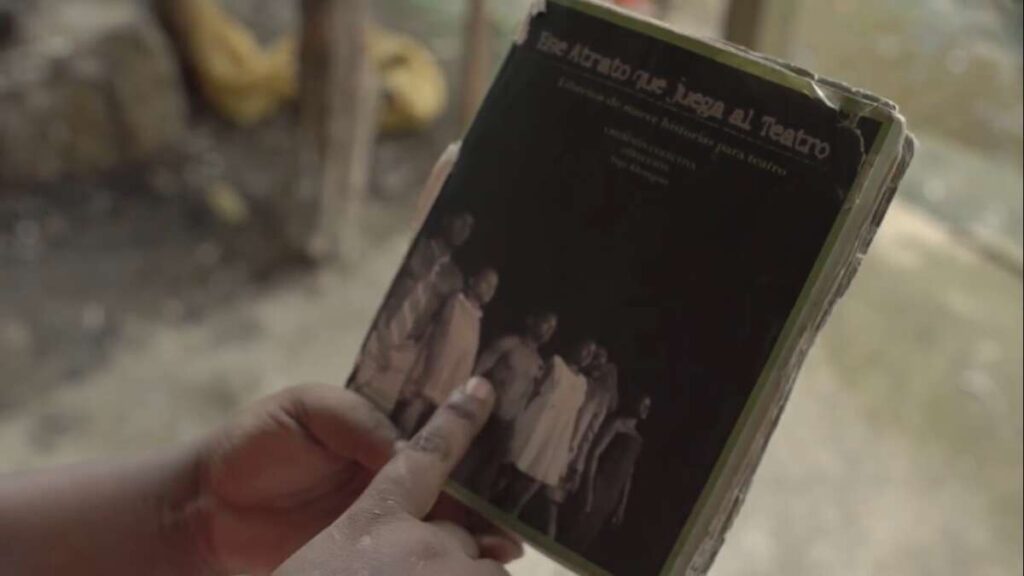
Some of these works, which were videoed by the Communications Team of the Diocese of Quibdó and Tamboreo Communications, are now part of an archive of audiovisual memory of el Atrato that preserves, in images and sounds, the memory of the time and the bodies in movement.
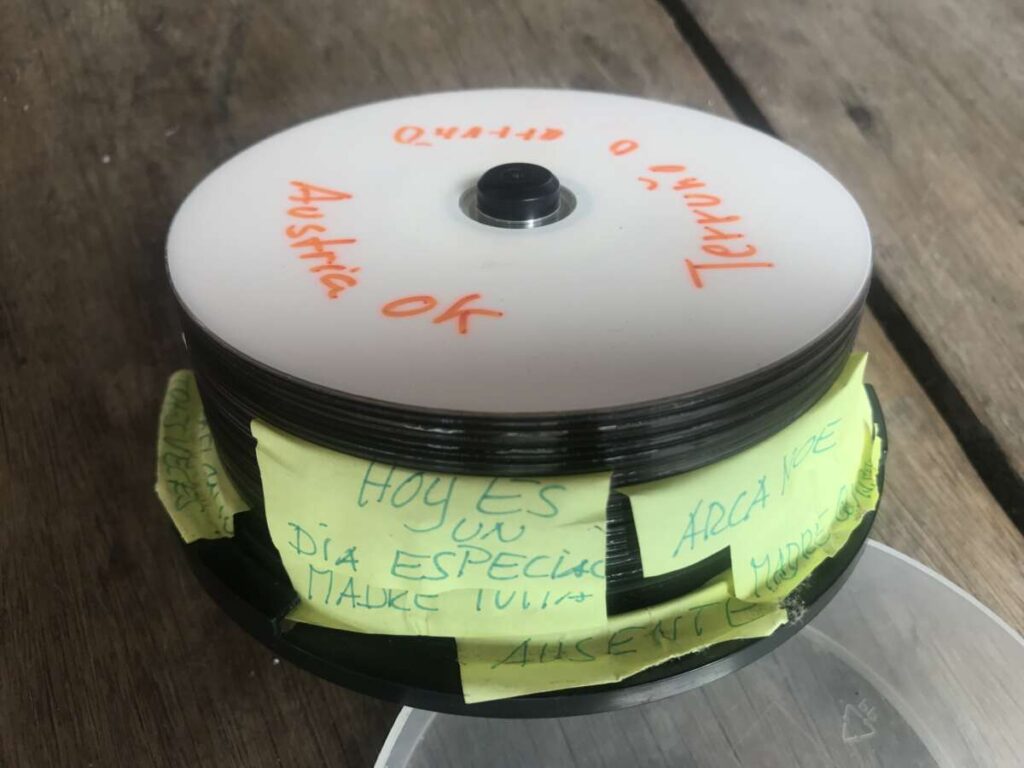
Art as a cornerstone of territorial construction and defence has been present in Bellavista and Bojayá since before the massacre. Strengthening cultural identities and practices through art has been at the centre of how communities have defended the territory and processed the relentless onslaught of the armed groups that, since 1996, have prevented many of their everyday activities in the Atrato river.
From that time, with the support of the Diocese of Quibdó, youth groups were established, and peasant cultural meetings and Indigenous cultural meetings were held where the communities from the region came together around dance, theatre and the narration of stories, ballads and poetry.
Stills from a video recorded by Jesús O Durán Téllez. Acervo de Memoria Audiovisual del Atrato y el Pacífico Colombiano. Collection of the Equipo de Comunicaciones of the Diocese of Quibdó; Bojayá 2000 – 2008 – DV203.
This is part of a renewed pastoral work that centres its efforts on the cultural, social, economic and organisational strengthening of communities, and in Bellavista groups have emerged from it like the Guayacán Women who, supported by the Augustinian Sisters, embroidered a curtain after the massacre to remember the names of the 117 victims. They also undertook other works such as restoring the mutilated Christand taking care of the place of memory in Bellavista Viejo.
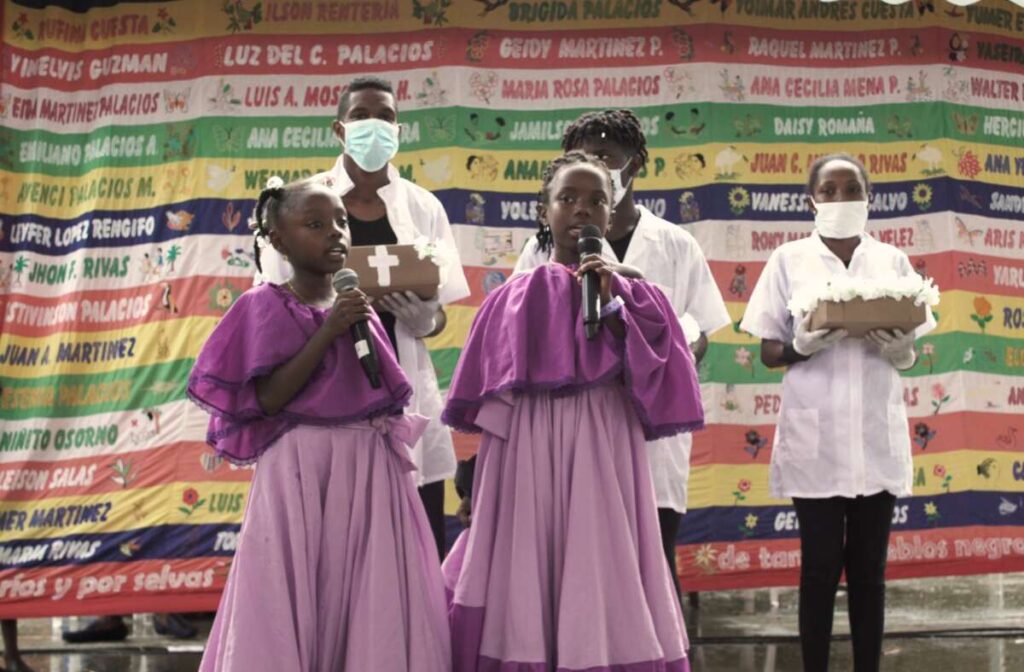

Collection of the Communications Team of the Diocese of Quibdó; Bojayá 2001-2008.
The dance and theatre group of Bellavista bears the name of Father Jorge Luis Mazo, who was one of the best known priests in the region as he set up community shops and encouraged youth groups during the war. He was murdered by the paramilitaries on 19 November 1999 and on the first anniversary of his death the Cantadoras de Pogue created an alabao, which was the starting point for an important process of composition of alabaos denouncing acts of violence and narrating the situation of the communities of Bojayá and the Atrato river.

Alabao composed to Father Jorge Luis Mazo. Authors: Cantadoras de Pogue, Performer: Elvia Mosquera. Sound recording: Prácticas Artísticas y Memoria en el Pacífico research project (UdeA – RHUL), Bellavista (Bojayá), November 2020.
Songs, dances, chirimías, theatre, music and the word have accompanied processes in defence of life and territory in Bojayá and el Atrato, such as the ‘Atratiando’ pilgrimages that in 1999, 2003 and 2015 sailed down the river from Quibdó to Turbo, seeking to re-establish navigability and break the blockades imposed by the war under the slogan of ‘por un buen trato en el río Atrato’ (for good treatment on the river Atrato).

The processes of creation of the theatrical work Honrar a los sagrados espíritus and the other works that the Colectivo de teatro de Bellavista retakes and re-signifies in the act of the Entrega final articulate personal and collective memory to create embodied narratives in which the actors process their emotions, mourning and affections. The new generations are integrated into these processes of creation and memory, and the more experienced actors share with them their experiences of the conflict as well as expressive and creative techniques to take care of themselves and defend life through the arts.
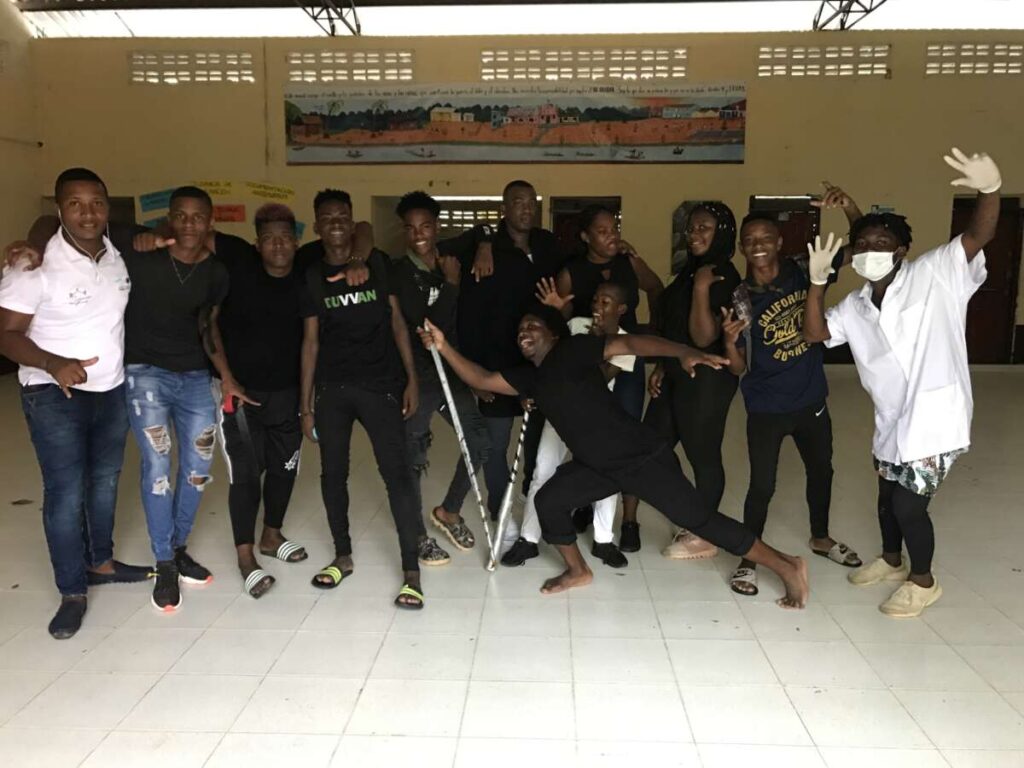
In Los muertos hablan, the actors who started the Colectivo de teatro de Bellavista read letters they wrote to the loved ones they lost in the massacre and express the pain of their absence and the present memory.

Fragment of an interview with Elvia Mosquera. Bellavista Nuevo (Bojayá), 16 November 2020. Prácticas Artísticas y Memoria en el Pacífico research project (UdeA – RHUL), Bellavista (Bojayá), November 2020.
Sixteen years later, in Honrar a los sagrados espíritus, the dead write to the living through the actors’ words, thanking the people present, the families and organisations from the territory, in particular the Comité de Víctimas or victims’ committee, for the bravery of their struggles to stay in the territory and seek the reparation that now enables them to rest in peace.

Fragment of an interview with José Luis Murillo. Bellavista Nuevo (Bojayá), 16 November 2020. Sound recording: Prácticas Artísticas y Memoria en el Pacífico research project (UdeA – RHUL).
